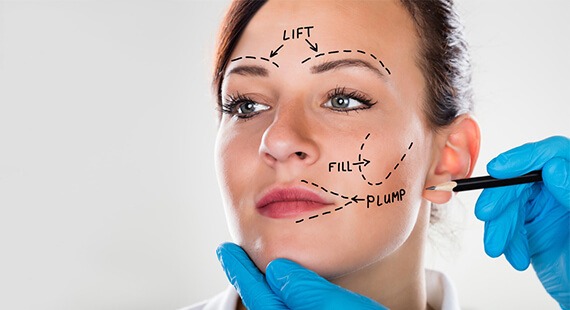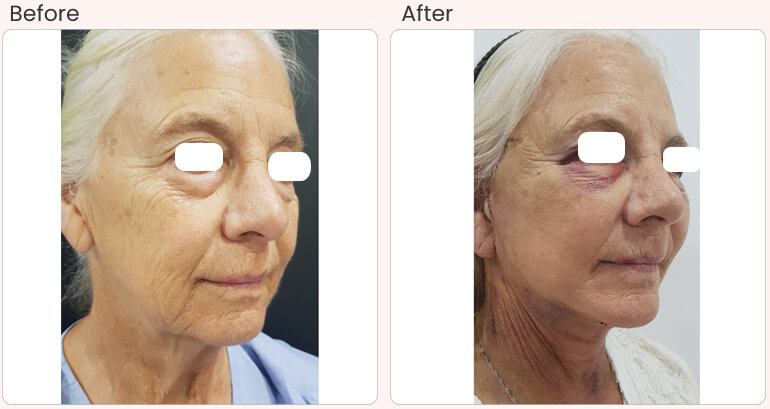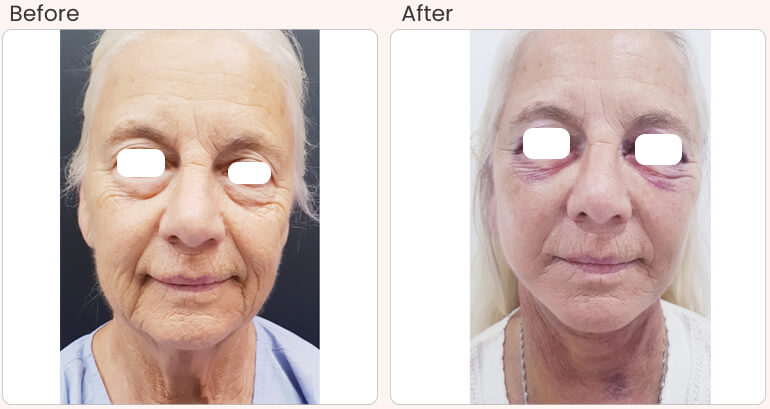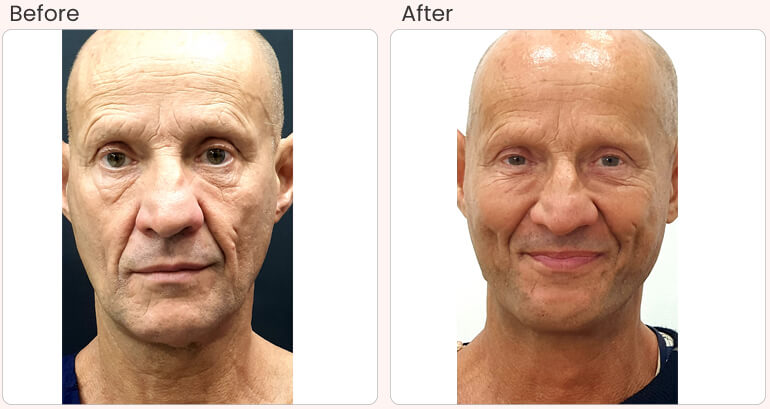Facelift
What Is Facelift?
Facelift, medically known as rhytidectomy, is a surgical procedure that is done to improve the visible signs of ageing in the face and neck. Depending on the amount of lax skin and the depth of fold lines, the surgeon will decide on the type of facelift procedure to be undertaken. We do not provide tour patients with unnatural results or a blown-out face. Instead, we work with their natural facial contours for the best results.
Various facelift procedures include, endoscopic facelift, mini facelift, classical facelift, and liquid facelift. Liquid facelift is a minimally invasive procedure and is done with Botox and dermal fillers. Facial fat grafting technique can also be applied for facelift to enhance the lost volume.
Download A Patient Guidebook Of Facelift ?
Facelift Best Results / Before & After
Why Facelift Is Done?
Facelift procedure is done if:
- The skin of your face sagging
- Fold lines between the nose and corner of the mouth are deepening
- You have lost volume on your face causing the skin to sag
- You have jowls developed in the cheeks and jaw
- You have lose skin and excess fat on your neck giving an appearance of double chin and turkey neck.
What Facelift Can / Can’t Do
- Can
- Make your face more youthful
- Add or remove volume
- Tighten your underlying muscular structure
- Remove excess skin or fat
- Be combined with a neck lift for optimum results
- Can’t
- Make you look like someone else
- Make your face look blown-out because of skin tightening
- Affect the underlying, natural contours
- Leave behind evident scars
Don’t take biggest decision of life
Without getting complete information!
How You Should Prepare For Facelift?
- Consult a board certified plastic surgeon
- The surgeon will prescribe some blood tests
- The surgeon will prescribe medications or adjust your current medications
- Stop smoking
- Avoid any medication not prescribed by the surgeon, like aspirin or any anti-inflammatory drugs. They can increase bleeding during the surgery
- Stop taking any recreational drugs, such as cocaine
- Arrange for a driver to take you back home post the surgery or someone to stay with you in case one night admission is required
What is the Procedure of Facelift?
A facelift is the literal lifting and tightening of the muscle structure under the face skin. Depending on the patient’s needs, there are three methods of doing this lift: SMAS ectomy, SMAS plication and MACS lift.
Under the guidance of Dr Rajat Gupta, we ensure that we give our patients exactly what they want. We do not provide them with unnatural results or a blown-out face. Instead, we work with their natural facial contours for the best results.
Recovery After Facelift?
- Outpatient procedure
- You may have some swelling, bruising & discomfort in the first 24-48 hours.This is only temporary and diminishes as the recovery proceeds.
- The surgeon might place a bandage around your face to minimize swelling and bruising.
- Small tubes may be present to draw off any excess blood or fluid.
- You can start your daily routine work from next day after the surgery and can go for a walk etc.
Download A Patient Guidebook Of Facelift ?
Risk involved in Facelift?
Like every surgery, there are risks and potential complications of facelift. Common risks involved in facelift include, anesthesia risks, a chance of infection, asymmetrical results and persistent pain.
However, if performed by a board-certified plastic surgeon the complications are avoidable.













